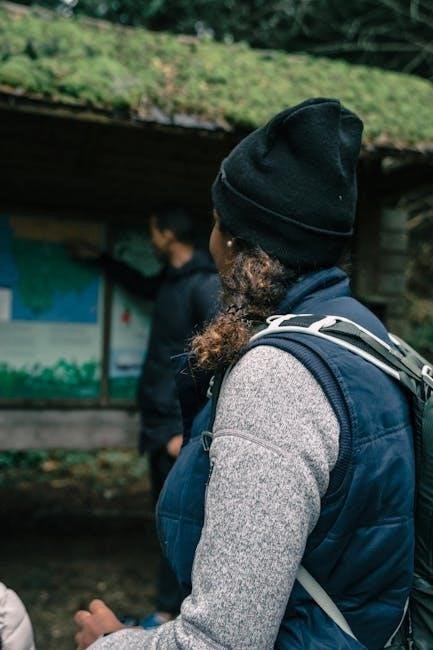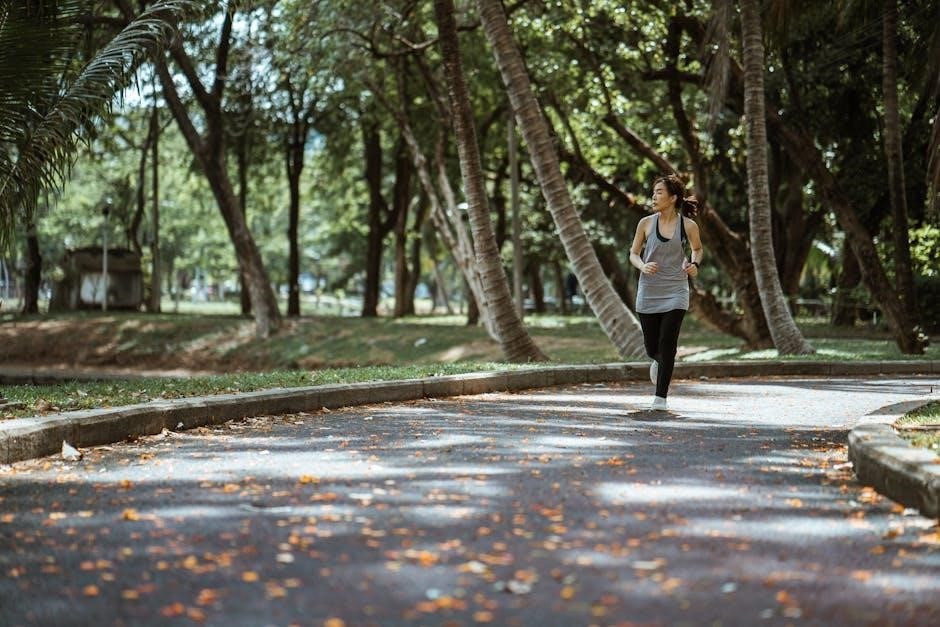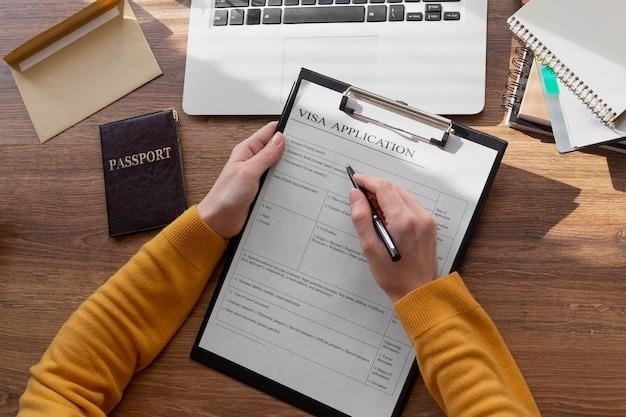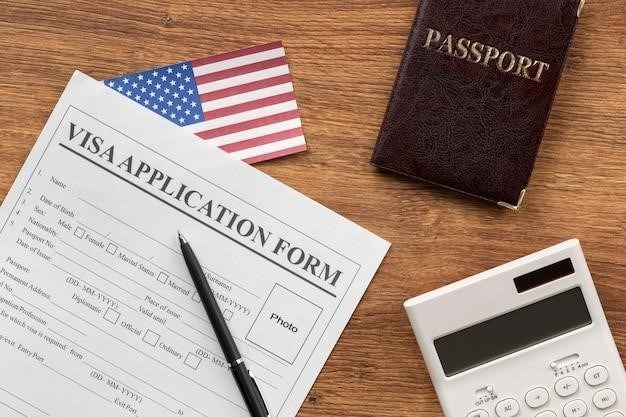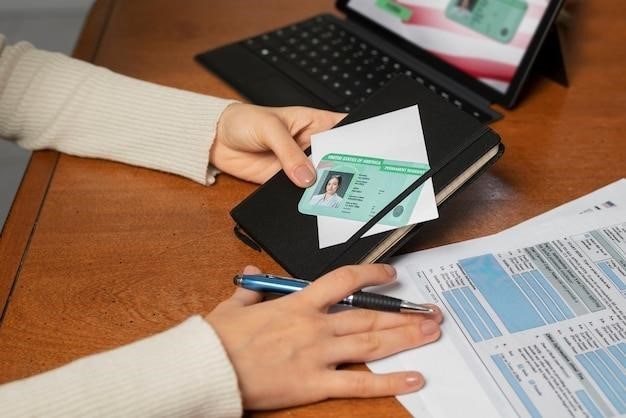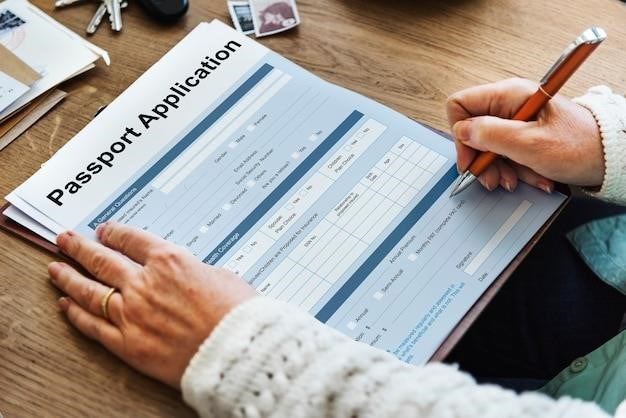Overview of “Teaching: Making a Difference, 5th Edition”
Teaching: Making a Difference, 5th Edition is a practical text that brings the classroom to life, offering theoretical foundations and digital resources for real-world applications․ It equips pre-service teachers with essential tools, activities, and teaching plans, supported by an interactive eBook and multimedia tools․ This market-leading text is accessible, engaging, and designed to inspire future educators while staying realistic and jargon-free․
Teaching: Making a Difference, 5th Edition is a foundational education text designed to engage and inspire future educators․ It provides a comprehensive overview of teaching as a profession, blending theoretical knowledge with practical strategies․ The textbook addresses contemporary issues, including diversity, technology integration, and policy changes, preparing pre-service teachers for real-world classroom challenges․ Its accessible, jargon-free approach makes it a valuable resource for both students and lecturers․
1․2 Key Features of the 5th Edition
The 5th Edition of Teaching: Making a Difference includes enhanced digital resources, such as an interactive eBook and multimedia tools, to support learning․ It emphasizes diversity, inclusion, and ICT competencies, addressing rapid policy changes and post-pandemic education․ The text offers practical strategies, real-world applications, and extensive teaching plans, making it a comprehensive guide for pre-service teachers and educators alike․
1․3 Importance of the Textbook in Teacher Education
Teaching: Making a Difference, 5th Edition is a foundational resource for teacher education, offering a balance of theory and practice․ Its interactive tools and practical strategies help pre-service teachers connect theoretical knowledge with real-world classroom scenarios․ The text’s focus on diversity, inclusion, and ICT skills prepares educators for modern classrooms, making it an indispensable guide for fostering effective teaching practices and student success․
Theoretical Foundations in the Textbook
The textbook provides a comprehensive overview of educational theories, blending historical insights with contemporary research to create a robust framework for understanding teaching practices and student learning dynamics․
2․1 Understanding Student Learning
Teaching: Making a Difference, 5th Edition emphasizes understanding student learning by connecting theoretical knowledge with practical teaching strategies․ It explores diverse learning needs, cognitive development, and engagement techniques, equipping pre-service teachers to create inclusive and effective learning environments․ The text bridges theory and practice, ensuring educators can address individual differences and foster meaningful student outcomes in dynamic classroom settings․
2․2 Historical Insights into Teaching
Teaching: Making a Difference, 5th Edition provides a comprehensive overview of the historical development of teaching practices․ It explores how educational reforms, societal changes, and technological advancements have shaped teaching methodologies over time․ By understanding these historical insights, pre-service teachers gain a deeper appreciation of the profession’s evolution, enabling them to contextualize contemporary teaching strategies and adapt to future challenges effectively․
2․3 The Role of ICT in Modern Classrooms
Teaching: Making a Difference, 5th Edition emphasizes the transformative role of ICT in modern classrooms, enhancing engagement through interactive content and data-driven instruction․ It highlights tools like educational software and learning management systems that foster collaboration and personalized learning, ensuring teachers are equipped with essential digital competencies to meet the demands of a technology-driven education landscape․

Practical Applications for Pre-Service Teachers
Teaching: Making a Difference, 5th Edition provides practical tools and activities to prepare pre-service teachers for real-world classrooms․ It offers lesson planning, classroom management strategies, and assessment techniques, ensuring future educators are well-equipped for their first teaching experiences․
3․1 Preparing for the First Classroom Experience
Teaching: Making a Difference, 5th Edition helps pre-service teachers understand the realities of teaching through practical tools and real-world scenarios․ It bridges theory and practice, offering lesson plans, classroom management tips, and strategies to engage students․ The text supports future educators in developing confidence and essential skills for their first classroom experience, ensuring they are well-prepared to inspire and educate effectively․
3․2 Developing ICT Competencies
Teaching: Making a Difference, 5th Edition emphasizes the importance of ICT skills in modern classrooms․ It provides practical strategies for integrating digital tools, addressing rapid policy changes, and leveraging technology for engaging lessons․ The text equips pre-service teachers with essential ICT competencies, ensuring they are prepared to effectively use technology in real-world educational settings and adapt to the evolving digital landscape․
3․3 Engaging and Inspiring Students
Teaching: Making a Difference, 5th Edition provides practical strategies for engaging and inspiring students through interactive and meaningful learning experiences․ It emphasizes the use of discussions, activities, and real-world applications to foster student interest and participation․ The text also includes case studies and resources to help pre-service teachers create dynamic lessons that cater to diverse learning needs and promote academic success․

The Authors and Their Expertise
Teaching: Making a Difference, 5th Edition is authored by prominent Australian education academics, including Rick Churchill, Amanda Keddie, and Julianne Moss, who bring extensive expertise in teacher education;
Their collective knowledge spans contemporary research, classroom practices, and policy insights, ensuring the text is both comprehensive and relevant for modern teaching contexts and challenges․
4․1 Profiles of the Authors
Rick Churchill, Amanda Keddie, Julianne Moss, Michael C․ Nagel, Kylie Shaw, Jenny Mackay, Will Letts, Michèle McGill, Jantiena Batt, Karley Beckman, Tiffani Apps, and Peter Grainger are leading Australian education academics․ Their expertise spans teacher education, curriculum design, and classroom practices, ensuring the text is informed by cutting-edge research and practical insights․ Their collective contributions have shaped contemporary teaching methodologies and policy frameworks, making the 5th Edition a trusted resource for educators worldwide․
4․2 Their Contributions to Education
The authors of Teaching: Making a Difference, 5th Edition have significantly influenced education through their research, curriculum development, and policy contributions․ They emphasize diversity, inclusion, and ICT integration, providing educators with practical tools and frameworks․ Their work supports teacher education, classroom practices, and policy development, ensuring educators are well-equipped to meet modern challenges and foster inclusive learning environments․

Popularity and Reviews of the Textbook
This textbook is renowned for its accessibility, engaging content, and practical approach․ It supports both students and lecturers, offering comprehensive coverage of modern educational practices and theories․
5․1 Why It’s a Bestseller
Teaching: Making a Difference, 5th Edition is a bestseller due to its accessible, jargon-free content and practical approach․ It engages students with real-world applications, supported by digital resources like an interactive eBook․ The text addresses contemporary issues such as diversity, inclusion, and ICT competencies, making it a must-have for pre-service teachers․ Positive reviews highlight its comprehensive coverage and student-friendly design․
5․2 Student and Lecturer Feedback
Students and lecturers praise Teaching: Making a Difference, 5th Edition for its engaging, practical approach and real-world relevance․ The interactive eBook and multimedia tools are highlighted as valuable resources; Lecturers appreciate the comprehensive teaching and learning package, while students find the text accessible and inspiring, helping them master concepts and succeed in assessments․ Feedback consistently underscores its effectiveness in preparing future educators․

Digital Resources and Support
The 5th Edition offers an interactive eBook, multimedia tools, and a comprehensive teaching and learning package, providing educators with extensive digital resources to enhance instruction and engagement․
6․1 Interactive eBook and Multimedia Tools
The 5th Edition includes an interactive eBook with multimedia tools, such as videos, quizzes, and interactive activities, to enhance learning․ These resources support both students and lecturers, providing engaging ways to master concepts and succeed in assessments․ The full-color, interactive format ensures a dynamic and immersive learning experience, making complex theories accessible and practical․
6․2 Teaching and Learning Packages
The 5th Edition offers extensive teaching and learning packages, including PowerPoint slides, lesson plans, and assessment tools․ These resources support lecturers in delivering engaging lessons and help students master concepts․ The package is designed to be user-friendly, providing structured activities and curriculum planning aids that enhance teaching efficacy and student outcomes․
Accessing the PDF Version
The Teaching: Making a Difference, 5th Edition PDF can be accessed through university libraries, educational platforms, or official publishers․ It offers an interactive eBook and digital tools․
7․1 Sources for Downloading the PDF
The Teaching: Making a Difference, 5th Edition PDF can be sourced from official publishers, educational platforms, or authorized digital repositories․ Ensure downloads are from legitimate sites to avoid unauthorized content․ Many universities and libraries provide free access to the PDF through their databases or e-learning portals, offering interactive features like the eBook and multimedia tools for enhanced learning experiences․
7․2 Tips for Effective Utilization
To maximize the use of the Teaching: Making a Difference, 5th Edition PDF, engage with its interactive content, such as multimedia tools and digital resources․ Utilize the built-in search function to quickly locate key concepts․ Explore the accompanying teaching plans and activities to enhance understanding․ Regularly review and annotate the text to reinforce learning․ Integrate the eBook’s features into your study routine for a comprehensive and immersive experience․

Legal and Ethical Considerations
Ensure copyright compliance when accessing the PDF․ Adhere to fair use guidelines and download only from authorized sources․ Respect intellectual property rights to support ethical academic practices․
8․1 Copyright and Fair Use Guidelines
Teaching: Making a Difference, 5th Edition is protected under copyright law․ Users must adhere to fair use guidelines, ensuring proper attribution and legal access․ Respect intellectual property rights by avoiding unauthorized distribution or reproduction․ Ethical practices mandate downloading only from authorized sources to support authors and publishers;
8․2 Ethical Downloading Practices
Accessing the 5th Edition ethically requires using authorized sources like university libraries or official publishers․ Avoid pirated sites to support authors and publishers․ Verify the legality of downloads to ensure compliance with copyright laws․ Ethical practices promote fairness and respect for intellectual property, fostering a responsible academic community․

Supporting Materials for Educators
The textbook offers extensive teaching plans, activities, and assessment tools, alongside an interactive eBook and multimedia resources, to support educators in delivering effective and engaging lessons․
9․1 Teaching Plans and Activities
Teaching: Making a Difference, 5th Edition provides comprehensive teaching plans and activities designed to engage students and support educators․ These resources include structured lesson outlines, interactive exercises, and practical strategies to implement in the classroom․ The text also offers multimedia tools and real-world applications, ensuring educators are well-equipped to deliver effective and inspiring instruction while addressing diverse student needs and contemporary educational challenges․
9․2 Assessment Tools and Resources
Teaching: Making a Difference, 5th Edition offers extensive assessment tools and resources to support educators in evaluating student progress․ These include quizzes, rubrics, and reflective exercises, designed to help students master concepts and succeed in assessments․ The text also provides lecturers with practical strategies to measure learning outcomes effectively, ensuring a comprehensive approach to teaching and assessment in diverse educational settings․

Student Supplements and Benefits
Teaching: Making a Difference, 5th Edition provides students with interactive eBooks, multimedia tools, and practical activities to master concepts and succeed in assessments, enhancing engagement and understanding․
10․1 Mastering Concepts and Succeeding in Assessment
Teaching: Making a Difference, 5th Edition supports students in mastering key concepts through interactive eBooks, multimedia tools, and practical activities․ The text is designed to be accessible and jargon-free, ensuring all students can engage deeply with the material․ Its structured approach and real-world applications help students succeed in assessments while developing a strong foundation for future teaching practices․
10․2 Real-World Applications of Theories
Teaching: Making a Difference, 5th Edition bridges theory and practice by providing practical tools and activities that prepare future educators for real-world classrooms․ The text emphasizes diverse teaching strategies, addressing policy changes and technological advancements, ensuring students can apply theoretical knowledge effectively in practical settings․ Multimedia resources further enhance understanding, making complex theories accessible and actionable for aspiring teachers․

Unique Features of the 5th Edition
The 5th edition uniquely addresses rapid policy changes, emphasizes diversity and inclusion, and enhances digital integration with ICT competencies, supported by interactive resources and multimedia tools․
11․1 Addressing Rapid Policy Changes
The 5th edition focuses on adapting to rapid policy changes in education, particularly post-pandemic․ It integrates updated digital technologies and strategies for diverse classrooms, ensuring teachers are prepared for evolving challenges․ Practical resources and real-world applications help educators navigate policy shifts effectively, fostering resilience and adaptability in modern teaching environments․
11․2 Emphasis on Diversity and Inclusion
The 5th edition emphasizes diversity and inclusion, offering strategies to support teachers in creating inclusive classrooms․ It addresses diverse student needs, cultural responsiveness, and equity in education․ Practical resources and case studies help educators foster inclusive environments, ensuring all students feel valued and supported in their learning journey․
The Impact of the Textbook on Teaching Practices
Teaching: Making a Difference, 5th Edition has transformed teaching practices by bridging theory and practice, equipping educators with practical frameworks to create engaging, inclusive, and effective learning environments․
12․1 Transforming Theoretical Knowledge into Practice
Teaching: Making a Difference, 5th Edition excels in translating theoretical concepts into actionable strategies, providing pre-service teachers with practical frameworks to apply in real-world classrooms․ By integrating digital tools and real-world scenarios, the text empowers educators to create engaging, inclusive, and effective learning environments, ensuring they are well-prepared for the complexities of modern teaching․
12․2 Fostering Positive Change in Education
Teaching: Making a Difference, 5th Edition fosters positive change by equipping educators with practical tools to address diverse classrooms and rapid policy shifts․ Its accessible, jargon-free approach inspires engagement and realism, preparing teachers to adapt and thrive in evolving educational landscapes, thereby driving meaningful and lasting improvements in teaching practices and student outcomes․
Comparisons with Previous Editions
The 5th edition of Teaching: Making a Difference stands out with enhanced digital tools, updated policy insights, and a stronger focus on diversity, making it a significant upgrade over earlier versions․
13․1 Upgrades and Improvements
The 5th edition of Teaching: Making a Difference features enhanced digital tools, updated policy insights, and a stronger focus on diversity and inclusion․ It integrates recent advancements in ICT, addressing post-pandemic educational shifts․ The text includes improved practical activities, real-world case studies, and multimedia resources, ensuring relevance and engagement for modern educators․ These upgrades reflect contemporary teaching challenges and opportunities․
13․2 Relevance in the Post-Pandemic Education Landscape
The 5th edition addresses the post-pandemic shift in education, emphasizing digital literacy and remote teaching strategies․ It provides insights into adapting to rapid policy changes and leveraging technology for student engagement․ The text supports educators in navigating a diverse, data-driven environment, ensuring relevance and practicality in modern classrooms․ These updates make it indispensable for teachers facing new challenges․
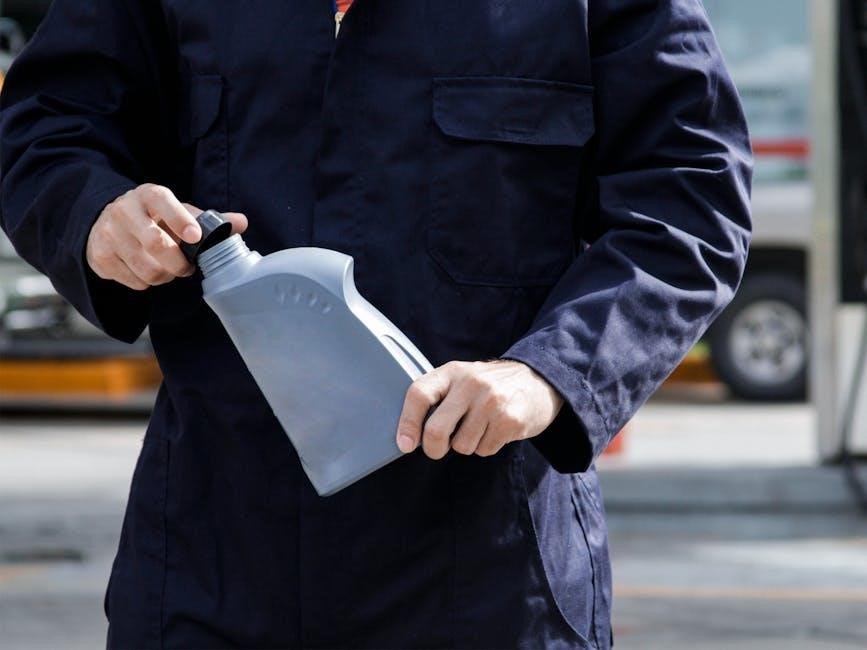
The Role of Technology in the Textbook
The textbook integrates digital tools and multimedia resources to enhance teaching practices․ It emphasizes ICT competencies, preparing educators to effectively use technology in modern, diverse classrooms․
14․1 ICT Competencies for Modern Classrooms
Teaching: Making a Difference, 5th Edition equips educators with essential ICT competencies, addressing digital technology advancements post-pandemic․ It provides practical strategies for integrating tools like interactive eBooks and multimedia into teaching, ensuring modern classrooms remain dynamic and student-centered․
14․2 Integrating Digital Tools into Teaching
Teaching: Making a Difference, 5th Edition emphasizes the integration of digital tools to enhance teaching practices․ It provides practical strategies for using interactive eBooks, multimedia resources, and online platforms to create engaging, real-world learning experiences․ These tools support lecturers in developing dynamic lesson plans and fostering student-centered classrooms, ensuring education remains relevant and effective in a technology-driven world․
Teaching: Making a Difference, 5th Edition leaves a lasting legacy in education, guiding future educators to adapt to evolving demands and inspire innovation in teaching practices․
15․1 The Textbook’s Legacy in Education
Teaching: Making a Difference, 5th Edition stands as a foundational resource in education, celebrated for its accessible and practical approach․ Its comprehensive framework bridges theory and practice, inspiring future educators․ By addressing contemporary challenges and emphasizing real-world applications, the textbook has shaped teacher education, leaving a lasting legacy in fostering innovative and inclusive educational practices․
15․2 Future Directions for Teacher Education
The 5th Edition of Teaching: Making a Difference sets the stage for future teacher education by emphasizing adaptability, technology integration, and global perspectives․ It advocates for personalized learning, collaborative classrooms, and equitable education․ By fostering innovation and critical thinking, the text inspires educators to embrace evolving challenges and opportunities, ensuring they are well-prepared to lead in a dynamic, ever-changing educational landscape․









